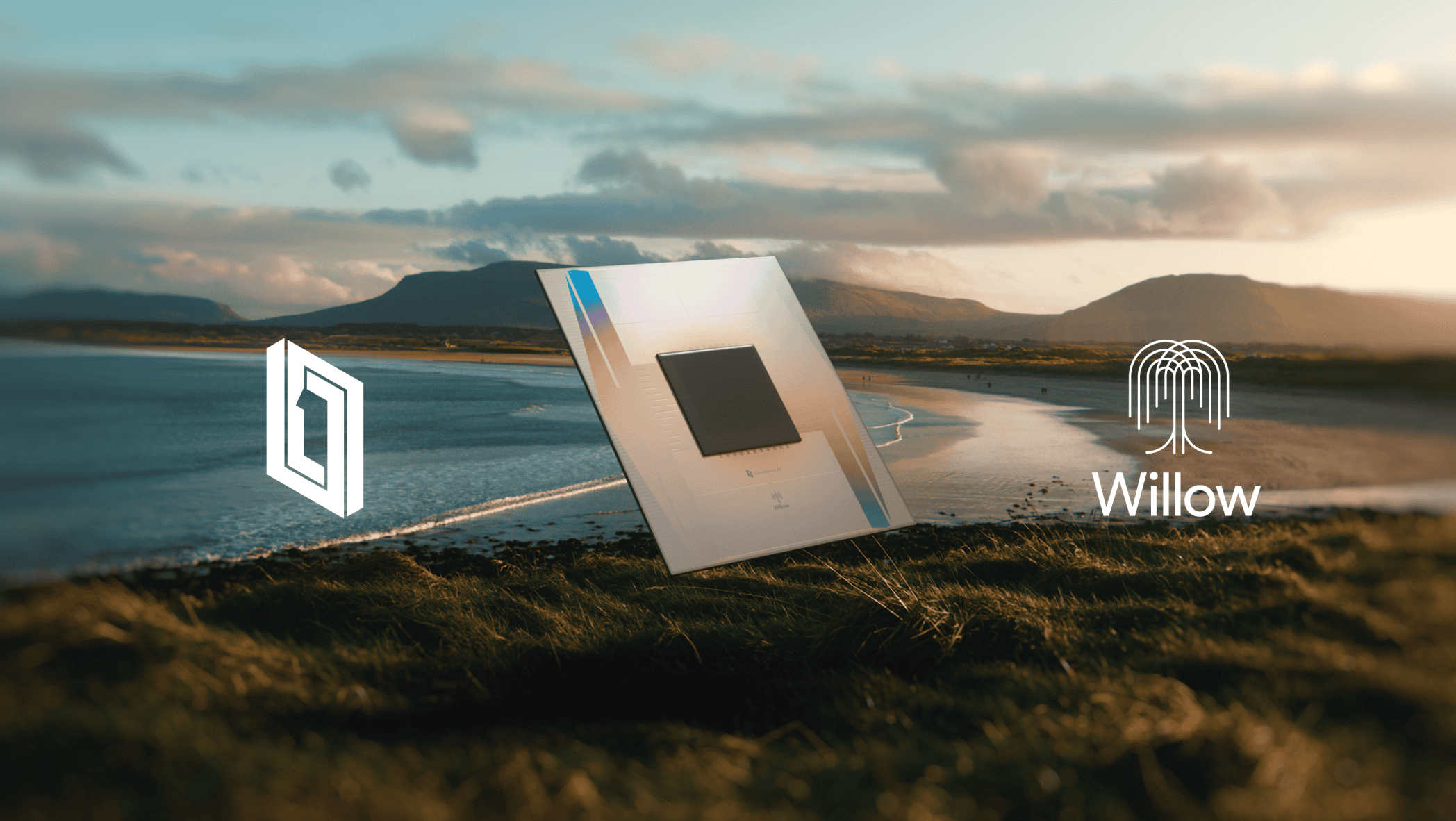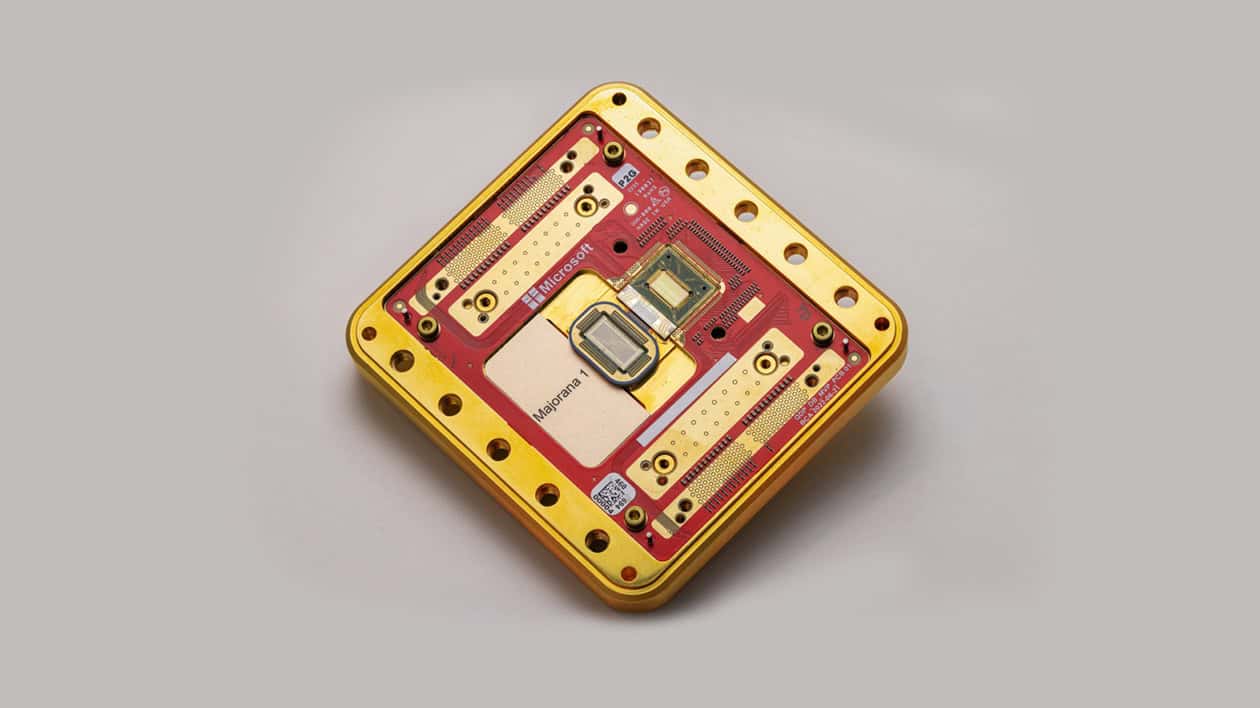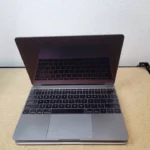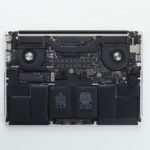The quantum computing race has intensified as Microsoft and Google unveil their latest breakthroughs—each taking distinct yet groundbreaking approaches to overcome the challenges of building scalable quantum systems. While Microsoft’s Majorana 1 chip pushes the boundaries of stability and scalability using exotic materials, Google’s Willow chip focuses on raw computational power and enhanced error correction. Together, these advancements not only highlight contrasting strategies but also accelerate the race toward practical quantum computing.
Microsoft Majorana 1 vs. Google Willow
Microsoft’s Majorana 1: A Topological Leap Toward Million-Qubit Machines
Unveiled in February 2025, Microsoft’s Majorana 1 chip introduces a game-changing topological architecture that could redefine the future of quantum computing. Unlike traditional superconducting or trapped-ion qubits, Majorana 1 harnesses the power of Majorana zero modes—exotic quasiparticles theorized to be their own antiparticles. These particles, long sought after by physicists, offer unique advantages for quantum stability due to their non-abelian statistics, which make them less susceptible to decoherence, the Achilles’ heel of quantum systems.
At its core, the Majorana 1 chip utilizes a newly engineered material dubbed a “topoconductor”, enabling the creation and manipulation of these elusive Majorana particles. Although the chip currently supports just 8 functional qubits—a modest count compared to rivals—its design prioritizes stability over quantity. This architecture is inherently scalable, with the potential to house up to one million qubits on a single, palm-sized chip. This could catapult Microsoft ahead in the long game of quantum supremacy.
Perhaps most compelling is the chip’s promise to reduce quantum error rates significantly. Quantum systems are notoriously fragile, with even minor environmental disturbances leading to computational errors. By using topological qubits, which are less sensitive to noise and thermal fluctuations, Microsoft aims to extend quantum coherence times, a critical hurdle in realizing practical quantum machines.
Potential Applications of Majorana 1:
- Secure Data Encryption: Developing near-impenetrable cryptographic methods.
- Complex Simulations: Modeling molecular interactions for drug discovery and materials science.
- Financial Modeling: Running intricate risk simulations faster than any classical system.
Microsoft’s bold claim? That practical quantum computing timelines could shrink from decades to mere years. While the scientific community remains cautiously optimistic, many agree that Majorana 1 represents a monumental leap forward.
Google’s Willow Chip: Pushing Computational Boundaries with 105 Qubits

Not to be outdone, Google has also made headlines with its Willow chip, introduced in December 2024. Building on the success of its earlier Sycamore processor, Willow packs 105 superconducting qubits, focusing heavily on quantum error correction (QEC)—a cornerstone of reliable quantum computation.
One of Willow’s most impressive feats is its ability to perform a complex calculation in under five minutes—a problem that would take the world’s fastest classical supercomputer an estimated 10 septillion years to solve. This level of quantum advantage underscores how far quantum computing has come since Google’s 2019 declaration of “quantum supremacy.”
The real standout, however, is Willow’s advancement in surface code error correction, a technique that allows logical qubits to remain stable even when underlying physical qubits fail. Google’s engineers have reduced logical error rates to historic lows, edging closer to the elusive threshold required for fault-tolerant quantum computation.
Key Innovations in Willow:
- Dynamic Qubit Coupling: Enhances qubit-to-qubit interactions for more complex operations.
- Optimized Cryogenic Systems: Improves stability by maintaining qubits near absolute zero.
- Enhanced Quantum Volume: Significantly increases the chip’s ability to handle complex algorithms.
Google envisions Willow paving the way for solving real-world problems in logistics, pharmaceuticals, and AI—domains where classical computers often falter due to exponential complexity.
Divergent Paths, Unified Goal: The Quantum Race Heats Up
While Microsoft and Google employ starkly different strategies—topological qubits vs. superconducting qubits—the endgame remains the same: building a fault-tolerant, scalable quantum computer capable of outperforming classical machines in meaningful tasks.
Microsoft’s approach, though currently limited in qubit count, could revolutionize qubit stability and long-term scalability. Meanwhile, Google’s high-qubit-count processors continue to push the boundaries of raw quantum computational power.
Industry analysts suggest that the future of quantum computing may not lie in a single approach but rather in a hybrid of multiple architectures. As companies like IBM, Intel, and startups such as Rigetti and IonQ also push forward with their unique quantum strategies, the next few years promise intense competition and rapid innovation.
Why This Matters
Quantum computing is no longer confined to the realm of theoretical physics. These recent breakthroughs hint at a near future where quantum processors tackle problems that would take classical supercomputers millennia to solve. From accelerating drug discovery to optimizing global supply chains and cracking complex encryption, the implications span industries.
While we’re still years away from fully realizing quantum computing’s vast potential, the progress made by Microsoft’s Majorana 1 and Google’s Willow chip brings us significantly closer to that quantum future.
The quantum revolution is no longer a question of “if”—it’s a matter of “when.”
Key Takeaways
- Microsoft’s Majorana 1 introduces topological qubits that could revolutionize quantum error correction
- Google’s Willow processor offers superior qubit count but faces traditional scaling challenges
- The competition between different quantum architectures drives rapid advancement in quantum computing technology
Comparative Analysis of Quantum Architectures
Microsoft’s Majorana 1 and Google’s Willow represent distinct approaches to quantum computing architecture, with significant differences in their qubit technologies, error correction methods, and scaling potential. These architectural choices directly impact their performance characteristics and future applications.
Microsoft Majorana 1: The Potential of Topological Qubits
Microsoft’s 8-qubit Majorana 1 uses a revolutionary topological architecture based on Majorana zero modes in topological superconductors. This unique approach offers inherent protection against quantum decoherence.
The chip’s topoconductor design incorporates specialized nanowires made from indium arsenide, enabling the creation of stable Majorana quasiparticles. These particles serve as the foundation for topological qubits.
DARPA’s evaluation of Microsoft’s architectural design highlighted the potential for scaling to a million-qubit system. The built-in error correction capabilities reduce the overhead typically required for maintaining qubit stability.
Google Willow: Advancements in Quantum Dot Technology
Google’s Willow chip features 106 qubits based on quantum dot technology. The architecture allows precise control over individual electrons trapped in semiconducting materials.
The quantum dot design provides excellent qubit connectivity and control through digital electronics. This enables complex quantum operations with reduced interference.
Willow’s architecture incorporates advanced error correction protocols and quantum gate operations. The system demonstrates improved coherence times compared to earlier quantum dot implementations.
Performance Metrics and Error Rates
Error Rate Comparison:
- Majorana 1: <0.1% error rate with topological protection
- Willow: ~1% error rate with active error correction
Key Performance Factors:
- Qubit Stability
- Gate Fidelity
- Coherence Time
- Scalability Potential
The Majorana 1’s topological protection reduces the need for extensive error correction circuits. This architectural advantage allows for more efficient use of physical qubits in quantum calculations.
Google’s Willow achieves high performance through sophisticated control systems and error mitigation techniques. The larger qubit count enables more complex quantum algorithms despite higher error rates.
Frequently Asked Questions
Microsoft’s Majorana 1 and Google’s Willow represent distinct approaches to quantum computing, with each architecture offering unique advantages for specific computational tasks and future scalability paths.
What are the key differences between Microsoft’s Majorana 1 and Google’s Willow quantum processors?
Microsoft’s Majorana 1 uses topological qubits based on a revolutionary class of materials called topoconductors. This approach aims to create more stable qubits that require less error correction.
Google’s Willow relies on superconducting qubits, a more established technology in the quantum computing field. Their design focuses on increasing qubit count while maintaining coherence.
How do Microsoft Majorana 1 and Google Willow architectures impact quantum error correction techniques?
Microsoft’s topological approach inherently reduces the need for extensive error correction through more stable qubits. The Majorana 1 design creates naturally protected quantum states.
Google’s Willow implements traditional error correction methods, requiring multiple physical qubits to create one logical qubit. This approach demands more resources but builds on proven techniques.
What are the implications of the choice between Microsoft and Google’s quantum technology on computational speed and scalability?
Microsoft’s Majorana 1 targets scaling to 1 million qubits through its topological design. The architecture reduces overhead from error correction, potentially allowing faster practical computations.
Google’s Willow prioritizes near-term practical quantum advantage. Their system offers more immediate results with current technology while working toward larger qubit counts.
How do the approaches of Microsoft and Google to quantum technology influence the future roadmap for quantum computing?
Microsoft’s long-term research project spans nearly two decades, focusing on breakthrough materials science to enable stable quantum computations.
Google emphasizes iterative improvements to existing quantum technologies. This strategy allows for regular upgrades and demonstrations of quantum capabilities.
What are the practical applications that could benefit from the unique features of either Microsoft Majorana 1 or Google Willow quantum processors?
Medical research and drug discovery benefit from Microsoft’s potential for stable, long-duration quantum calculations.
Material science simulations align well with Google’s current capabilities in handling complex quantum states.
Industrial optimization problems can run on both platforms, with each offering different advantages in computation time and accuracy.
In terms of developer accessibility and ecosystem support, how do Microsoft’s and Google’s quantum computing offerings compare?
Microsoft integrates quantum development tools into their existing Azure cloud platform. This integration provides familiar development environments for software engineers.
Google offers Cirq and other open-source tools for quantum programming. Their ecosystem emphasizes community contribution and academic collaboration.
Both companies provide simulation tools for testing quantum algorithms before running on actual hardware.







